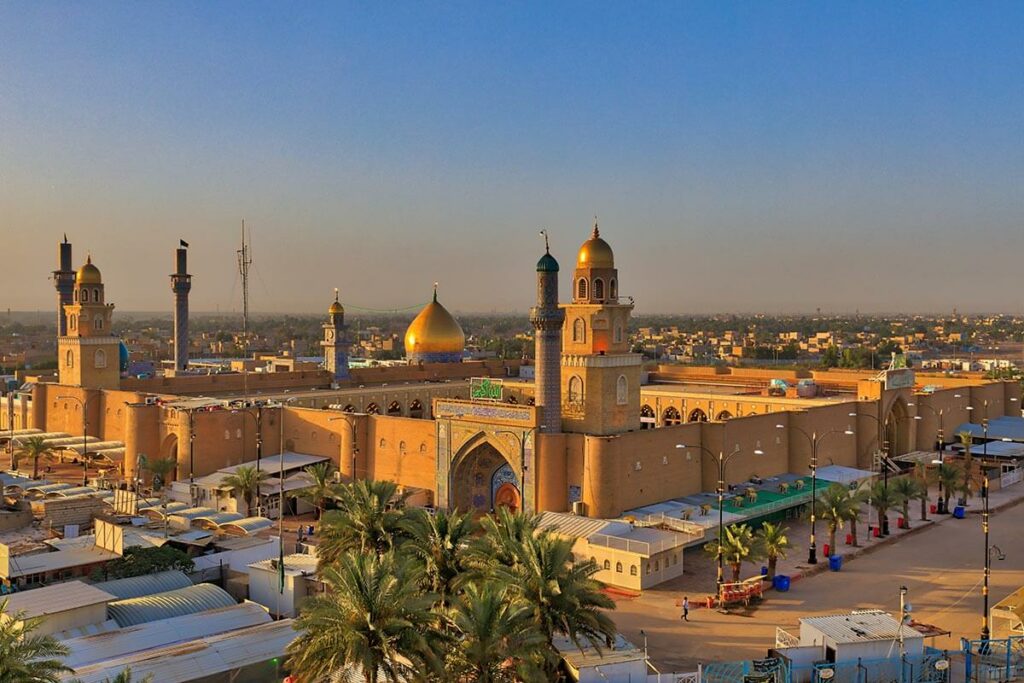![]()
The Human Development Index (HDI) is a composite indicator that assesses a country’s overall development across three key dimensions: health (measured by life expectancy), education (school enrollment and educational attainment), and standard of living (gross national income per capita). Iraq, a country located in the Middle East, has endured decades of conflict that have severely affected its human development. Although it has made some progress, major challenges remain in several areas, including the consequences of wars, internal political tensions, and economic problems.
1. Evolution of the HDI in Iraq
Iraq ranks among the countries with medium human development in the global HDI ranking. Since the end of the Iraq War (2003), the country has tried to rebuild its infrastructure and institutions, but chronic instability and conflict have hampered these efforts. Iraq’s HDI showed an upward trend before the 2000s, but conflicts have led to a significant decline in these indicators. Although improvements have been observed in recent years, the results remain insufficient compared to other countries in the region.
The country faces strong regional disparities and marked social inequalities. The Iraqi government is working to stabilize the country and revive its development, but socio-economic challenges remain.
2. Education in Iraq
The education sector in Iraq has suffered from long periods of war and sanctions, with lasting effects on access to education and the quality of education. Before the 2003 invasion, Iraq had a relatively developed education system, with high literacy and enrollment rates. However, the years of war have significantly deteriorated this system.
Currently, access to education remains uneven, with disparities between urban areas, such as Baghdad, and rural areas. Primary school enrollment is relatively high, but there are many gaps in secondary and higher education. The country also faces a shortage of qualified teachers and teaching resources, which hinders the quality of education.
In addition, although girls have better access to education than before, barriers persist in some rural or conservative areas, where traditions and social values may limit girls’ access to education.
3. Health in Iraq
The Iraqi health system has been severely affected by decades of conflict and international sanctions, as well as the 2003 war and subsequent conflicts. Health infrastructure is often outdated and under-resourced, particularly in rural and remote areas.
Life expectancy in Iraq is around 70 years, but this average hides significant disparities. Health care remains inaccessible to a significant portion of the population, due to poor infrastructure and a lack of modern medical equipment. The country faces major public health challenges, including infectious diseases and malnutrition-related disorders, as well as a rise in non-communicable diseases such as cardiovascular diseases and diabetes.
The country also suffers from serious environmental problems that negatively impact public health, including air and water pollution. In addition, Iraq faces challenges related to refugee management, particularly due to the Syrian crisis, which has led to a massive influx of refugees into the country, putting a strain on health services.
4. Iraq’s Standard of Living and Economy
Iraq has vast oil resources, which constitute a major part of its economy. However, the country has yet to fully exploit its economic potential, due to internal conflicts and political instability. Gross national income per capita is relatively high compared to other countries in the region, but economic inequality is marked, and poverty remains a major problem.
Unemployment is also high, particularly among the youth and university graduates. The Iraqi economy is largely dependent on oil, making it vulnerable to fluctuations in oil prices. In addition, the reconstruction of the country’s infrastructure has been slow and often hampered by security and governance issues.
Dependence on the oil sector and the lack of diversification of the economy are key factors limiting Iraq’s long-term economic prospects. In addition, inflation and budget deficits are significant economic challenges facing the country.
5. Social and Political Challenges
Iraq continues to experience significant political instability. Following the fall of Saddam Hussein, the country has experienced a succession of fragile governments, and the political situation remains complex, with tensions between different ethnic and religious factions. These tensions have led to sectarian violence and internal conflicts, which have hampered the country’s human development.
Social inequality is another major challenge. Despite oil wealth, rural areas, particularly in the south and north of the country, face a lack of access to basic services, widening the gap between urban and rural areas. The situation of women is also of concern; although progress has been made in some areas, persistent barriers still limit their access to education and employment, particularly in conservative regions.
The country also faces environmental challenges, including the effects of climate change on water resources, which directly impacts agriculture and the daily lives of its inhabitants.
Conclusion
Iraq has made modest progress in human development, but significant challenges remain. The impact of wars and internal conflicts has profoundly affected the country’s education system, health infrastructure, and economic development. Although improvements have been made over time, marked inequalities and persistent political instability continue to hamper Iraq’s growth and human development.
To improve its HDI, Iraq must address its political and governance challenges, diversify its economy, strengthen its education and health systems, and invest in modern infrastructure. Improving the security situation and creating economic opportunities for young people and women will be key factors in building a more stable and prosperous future for the Iraqi population.

